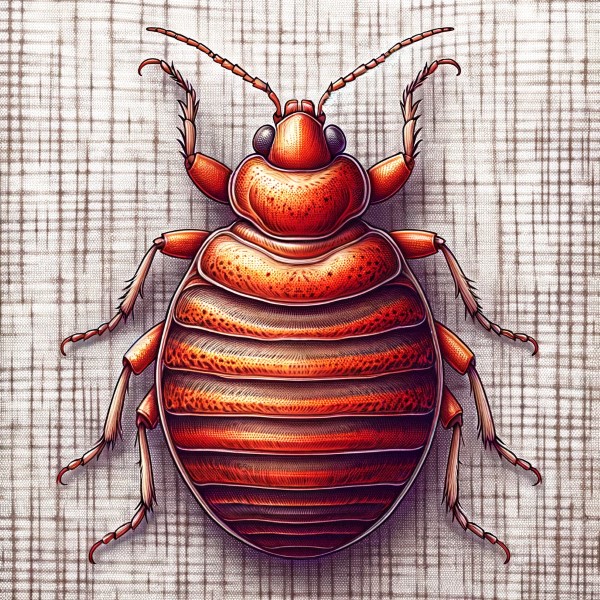Table of Contents
- 1 1. Extreme Survivors: Uncovering the Remarkable Temperature Resilience of Bed Bugs
- 2 2. Unexpected Habitats: Exploring the Surprising Places Where Bed Bugs Thrive
- 3 3. A Closer Look: The Physical Characteristics of Bed Bugs
- 4 4. Insatiable Appetites: The Astonishing Feeding Capabilities of Bed Bugs
- 5 5. Longevity and Reproduction: The Lifespan and Reproductive Cycle of Bed Bugs
- 6 6. Daytime Feeding: Debunking the Myth of Bed Bugs as Strictly Nocturnal Feeders
- 7 7. Adaptation and Evolution: How Bed Bugs Have Evolved Over Thousands of Years
- 8 Key Takeaways
Bed bugs, often the source of nightmares and sleepless nights, are more than just pesky insects that invade our beds. They are survivors, adapters, and fascinating creatures in their own right. This article delves into seven captivating facts about bed bugs, shedding light on their unique characteristics and behaviors.
1. Extreme Survivors: Uncovering the Remarkable Temperature Resilience of Bed Bugs
Bed bugs are not just resilient; they are extreme survivors. These tiny insects can withstand temperatures as high as 113°F and as low as 46°F. This incredible temperature resilience is a testament to their survival skills and has allowed them to thrive in various environments around the world for thousands of years.
2. Unexpected Habitats: Exploring the Surprising Places Where Bed Bugs Thrive
Contrary to popular belief, bed bugs are not limited to hotels and motels. They can be found in single-family homes, apartments, hospitals, college dorm rooms, office buildings, schools, buses, trains, movie theaters, and retail stores. This fact emphasizes their adaptability and the need for vigilance in various environments.
3. A Closer Look: The Physical Characteristics of Bed Bugs
Bed bugs are flat, round, and reddish-brown, measuring about a quarter-inch in length. The most common types that affect humans are Cimex lectularius (the common bed bug) and the tropical bed bug. Understanding their physical characteristics can help in identifying and controlling infestations.
4. Insatiable Appetites: The Astonishing Feeding Capabilities of Bed Bugs
Bed bugs have an insatiable appetite. They can ingest more than seven times their body weight at one time, equivalent to a 150-pound adult drinking 473 liters of water in one sitting. This fact highlights their efficient feeding mechanism, which is crucial for their survival and reproduction.
5. Longevity and Reproduction: The Lifespan and Reproductive Cycle of Bed Bugs
Bed bugs have a surprisingly long lifespan and reproductive cycle. A female bed bug lays about 100-150 eggs in her lifetime, and bed bugs can live for more than a year. This reproductive capability, combined with their longevity, contributes to their persistence in infested areas.
6. Daytime Feeding: Debunking the Myth of Bed Bugs as Strictly Nocturnal Feeders
While bed bugs prefer to feed at night, they are not strictly nocturnal. A really hungry bed bug can feed during the daytime, which challenges the common perception of their feeding habits. This behavior suggests that bed bugs can adapt their feeding schedule based on availability and necessity.
7. Adaptation and Evolution: How Bed Bugs Have Evolved Over Thousands of Years
Bed bugs have been around for thousands of years, adapting and evolving to survive in various environments. Their journey through time is a story of resilience and adaptability, making them fascinating subjects for scientific study and understanding how pests evolve over time.
Key Takeaways
- Bed bugs can survive extreme temperatures.
- They thrive in a wide range of environments.
- Bed bugs have distinct physical characteristics.
- Their feeding capabilities are remarkably efficient.
- Bed bugs have a long lifespan and reproductive cycle.
- They can feed during the day if necessary.
- Bed bugs have evolved over thousands of years.
Bed bugs, often seen as mere pests, are indeed fascinating creatures with remarkable survival skills. From their ability to withstand extreme temperatures to their adaptability in various environments, bed bugs continue to intrigue and challenge humans. Understanding these facts about bed bugs not only helps in controlling them but also appreciates the complexity of these tiny survivors.


